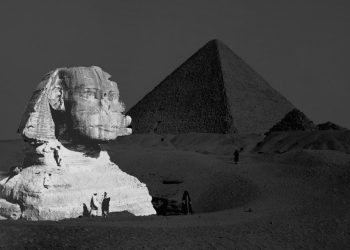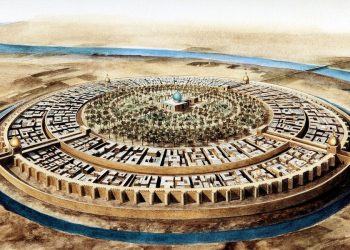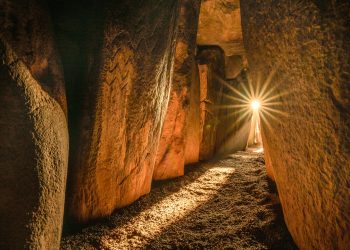The Round City of Baghdad, also known as Madinat al-Salam, was the capital of the Abbasid Caliphate and one of the greatest cities of the medieval world. Built in the 8th century by Caliph al-Mansur, the city was designed to be a symbol of the caliphate’s power and prestige. Here are seven fascinating facts about the Round City of Baghdad.
It Was One of the Largest Cities in the World
At its peak, the Round City of Baghdad was one of the largest and most populous cities in the world. It had a circumference of 7.2 kilometers and was home to over a million people. The city was divided into four quarters, each with its own gate and mosque, and was surrounded by a circular wall with thirty-eight towers.
It Was Designed to Be a Perfect Circle
The Round City of Baghdad was designed to be a perfect circle, with a diameter of approximately one kilometer. The city’s circular design was based on a Persian model of urban planning, which emphasized symmetry and harmony. The caliph’s palace was located at the center of the city, and the main streets radiated out from this point.
It Was a Center of Learning and Culture
The Round City of Baghdad was not just a political and economic center, but also a hub of learning and culture. The city was home to the famous House of Wisdom, a renowned center of scholarship and translation. Scholars from all over the Islamic world came to Baghdad to study and conduct research, and the city became known for its contributions to fields such as mathematics, astronomy, and medicine.
It Had a Sophisticated Water System
The Round City of Baghdad had a sophisticated water system, which was designed to bring water from the Tigris River to the city’s residents. The system included a network of canals, aqueducts, and cisterns, and was managed by a team of engineers and watermasters. The city’s water system allowed for the cultivation of crops and the development of gardens and parks.
It Was a Center of Trade and Commerce
The Round City of Baghdad was a major center of trade and commerce, and its markets were famous throughout the Islamic world. The city’s location on the Tigris River made it an important hub for the trade of goods such as textiles, spices, and ceramics. Merchants from all over the Islamic world came to Baghdad to buy and sell goods, and the city’s markets were known for their vibrant atmosphere and diversity of products.
It Suffered from Natural Disasters and Invasions
Despite its many achievements, the Round City of Baghdad was not immune to natural disasters and invasions. The city suffered from several devastating floods and earthquakes, which caused extensive damage to its buildings and infrastructure. In addition, the city was invaded and sacked by Mongol armies, which marked the beginning of its decline.
Its Legacy Lives On
Although the Round City of Baghdad no longer exists in its original form, its legacy lives on in the cultural and intellectual achievements of the Abbasid Caliphate. The city’s contributions to mathematics, astronomy, and medicine continue to be studied and appreciated today. In addition, the city’s circular design has influenced the development of urban planning and architecture in many parts of the world.
The Round City of Baghdad was a remarkable achievement of medieval urban planning and design. Its circular shape, sophisticated water system, and cultural achievements continue to be admired and studied today. Despite its eventual decline, the city remains a symbol of the power and prestige of the Abbasid Caliphate and a testament to the ingenuity and creativity of human civilization.
*Featured image: The Round City of Baghdad. A modern reconstruction, courtesy of Naji El Mir.
PLEASE READ: Have something to add? Visit Curiosmos on Facebook. Join the discussion in our mobile Telegram group. Also, follow us on Google News. Interesting in history, mysteries, and more? Visit Ancient Library’s Telegram group and become part of an exclusive group.











